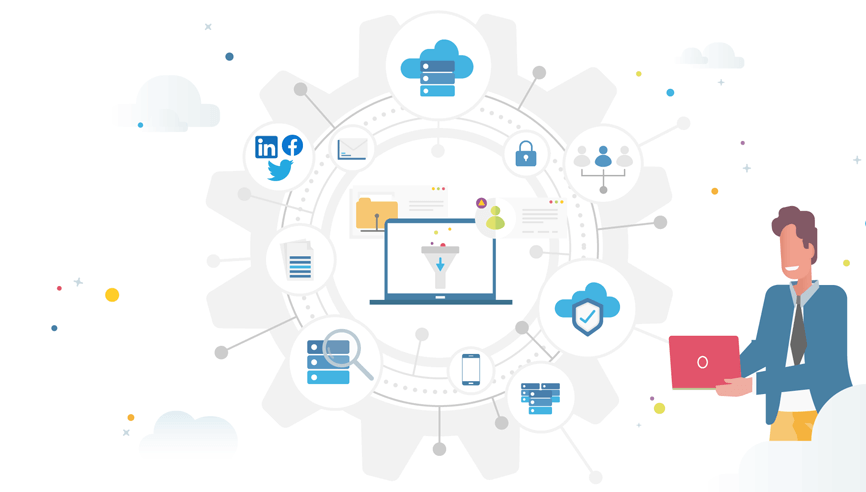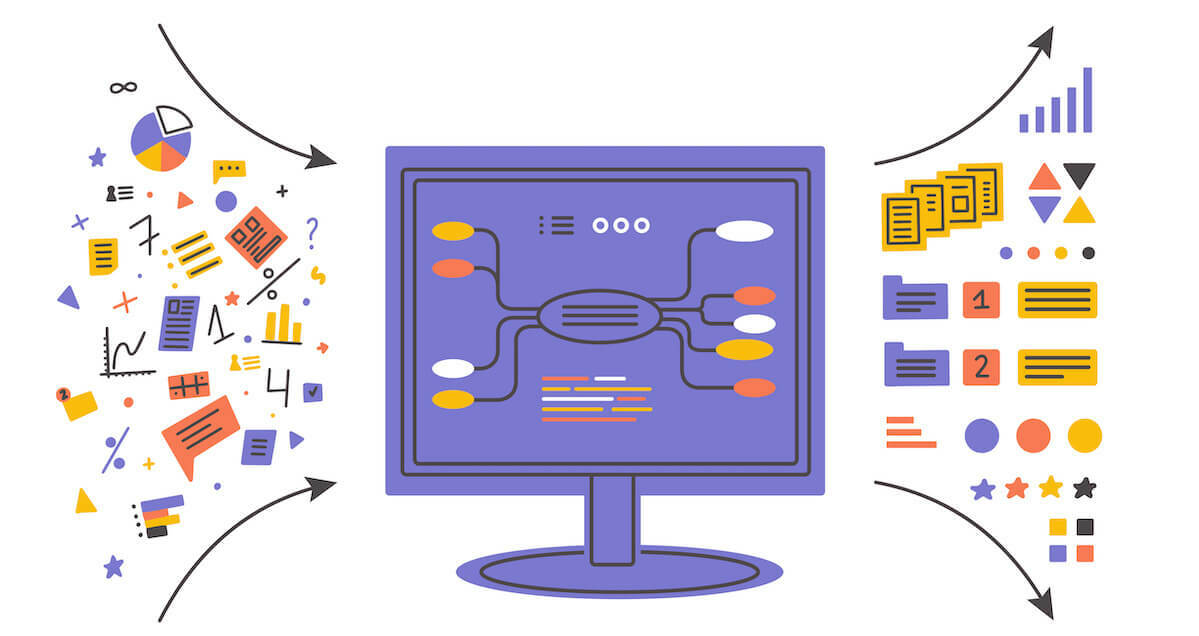What is data integration?
Combining information from various origins to create a cohesive perspective for enhanced business utility is known as data integration. This practice holds significant importance for enterprises, particularly in the era of digital evolution, where data origins are both diverse and extensive. Its advantages for your business encompass heightened operational efficiency, enriched customer experiences, informed decision-making, and enhanced collaboration. However, the path to successful information amalgamation raises questions. What hurdles, trends, and optimal methods accompany this process? This article addresses these inquiries, shedding light on how information amalgamation can revolutionize your business in 2024.
Data Integration Challenges
Integrating with legacy systems and platforms
Many businesses still rely on outdated systems and platforms that are not compatible with modern data integration tools and techniques. This can create data silos, inconsistencies, and errors.
Maintaining data quality and consistency
Data quality and consistency are crucial for data integration. However, data quality and consistency can be compromised by factors such as human errors, duplication, missing values, and format differences.
Addressing data security and privacy issues
Data security and privacy are vital for data integration. However, data security and privacy can be threatened by factors such as cyberattacks, data breaches, and unauthorized access. It also requires compliance with data regulations and standards, such as GDPR and CCPA, which can vary by country and industry.
Navigating data regulations and compliance
It also requires compliance with data regulations and standards, such as GDPR and CCPA, which can vary by country and industry. It must ensure that data is collected, stored, processed, and shared in accordance with the relevant laws and policies.
Trends
Cloud-based integration platforms (iPaaS)
iPaaS, an acronym for Integration Platform as a Service, is a cloud-based approach providing a set of tools and services to streamline the combination of information from various sources such as cloud applications, databases, APIs, and IoT devices. This eliminates the need for the installation and maintenance of software and hardware. Moreover, iPaaS is known for its scalability, flexibility, automation, and intelligent features in the field of integrating information.
Artificial intelligence and machine learning
AI and machine learning involve empowering machines to grasp information and perform tasks that traditionally demand human intelligence. These technologies streamline the integration of information by automating various processes such as data cleansing, mapping, transformation, and analysis. Furthermore, they reveal valuable insights, patterns, and anomalies within datasets, providing recommendations and predictions to facilitate integration efforts.
Event-driven and real-time integration
Event-driven and real-time integration strategies enhance the speed at which data integration responds to events and changes in data sources. This approach enables the swift collection and management of information from streaming sources such as sensors, social media, and mobile devices, ensuring timely delivery to the intended destination. Additionally, incorporating event-driven and real-time integration improves the timeliness, accuracy, and relevance of data in the integration process.
Data virtualization and federation
Data virtualization and federation encompass strategies that enable the amalgamation of information, enabling the retrieval and analysis of data from diverse sources without the necessity of physically moving or duplicating the data. Through the utilization of these methods, you can establish a virtual layer of data that serves as a consolidated source for accessing and overseeing information. Furthermore, these approaches assist in mitigating issues associated with duplicating data, storage demands, and latency in the realm of data integration.
Best Practices
Define your data integration goals and objectives
Before commencing the integration of information, it is crucial to outline your intended outcomes and reasons for doing so. Identify the sources of your information, as well as the prerequisites and anticipated outcomes. Additionally, ensure that your goals for data integration are in harmony with your overall business goals and objectives.
Assess your data sources and requirements
Once you define the aims and targets of integrating information, it becomes essential to evaluate your information origins and their needs. Analyze the excellence, volume, and variety of the information sources, and recognize the required formats, standards, and protocols to achieve smooth integration of information.
Design your data integration architecture and strategy
Once you’ve assessed your data sources and requirements, it’s crucial to design the architecture and plan for integrating your information. Select an appropriate platform, tool, or method for data integration that aligns with your goals. Also, delineate the process of integrating data, which involves activities such as extracting, transforming, and loading (ETL).
Implement your data integration solution and monitor its performance
Once you have strategized the architecture and method for incorporating information, the subsequent phase involves implementing your data amalgamation solution and monitoring its performance attentively. Ensuring the seamless operation of the integration process is essential. Moreover, evaluating critical elements such as data quality, reliability, and usability serves as a measure for determining the overall success of your endeavors in data integration.
Evaluate your data integration outcomes and improve your processes
Once your solution for integrating information is implemented and its performance is monitored, it is essential to evaluate the outcomes and fine-tune your procedures. Examine the feedback and results of the information integration, identifying both its advantages and drawbacks. Make any needed modifications and improvements to the solution, and repeat the cycle as necessary.
Conclusion
Data integration can transform your business in 2024 by enabling you to leverage your data for more value and competitive advantage. If you need help, you can contact us at OnextDigital, a leading digital agency that provides web development, mobile app development, UX/UI design, and white label software services. We have a team of experts who can help you with data integration solutions that suit your needs and goals. Contact us today and let us help you transform your business.






